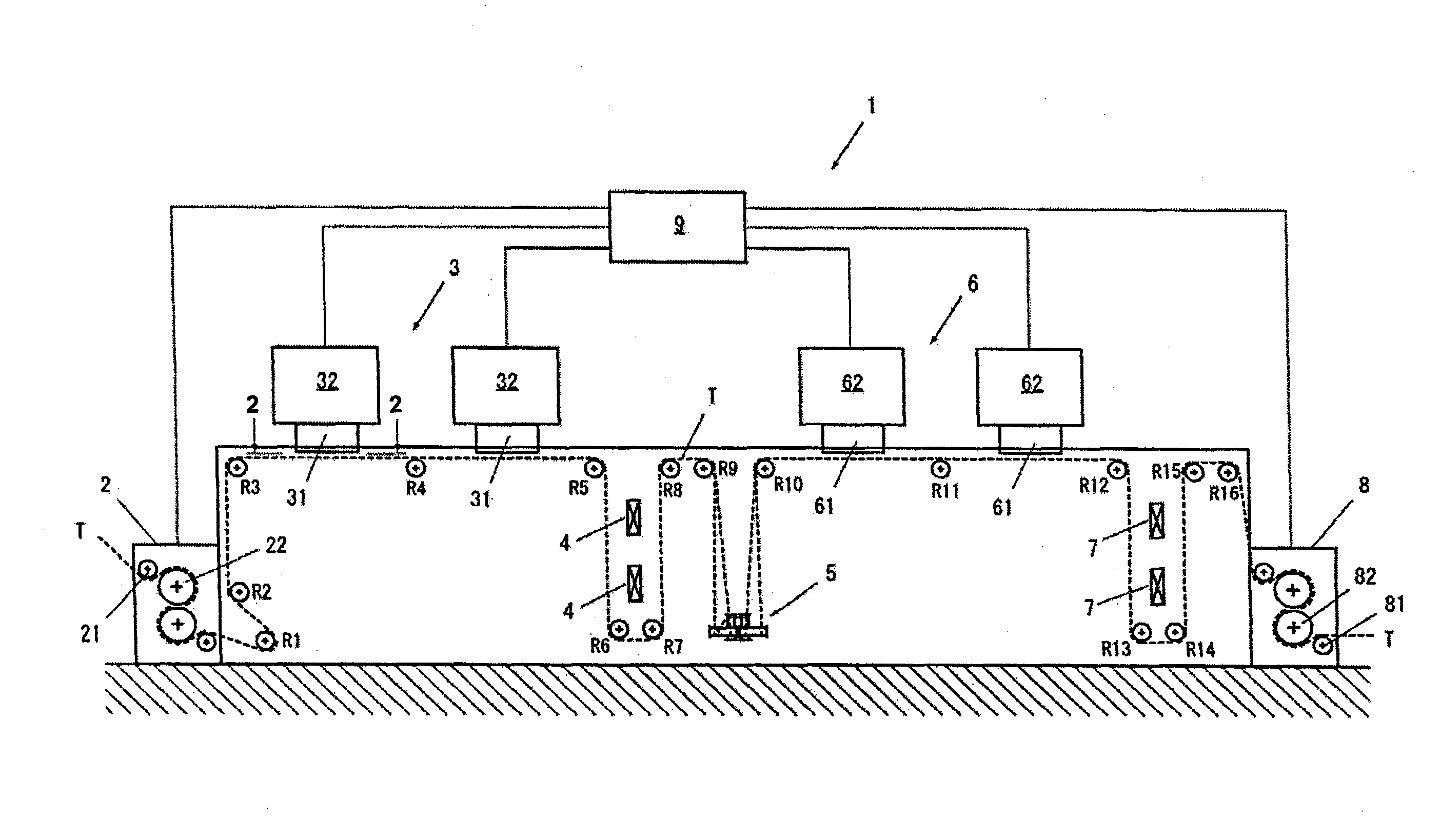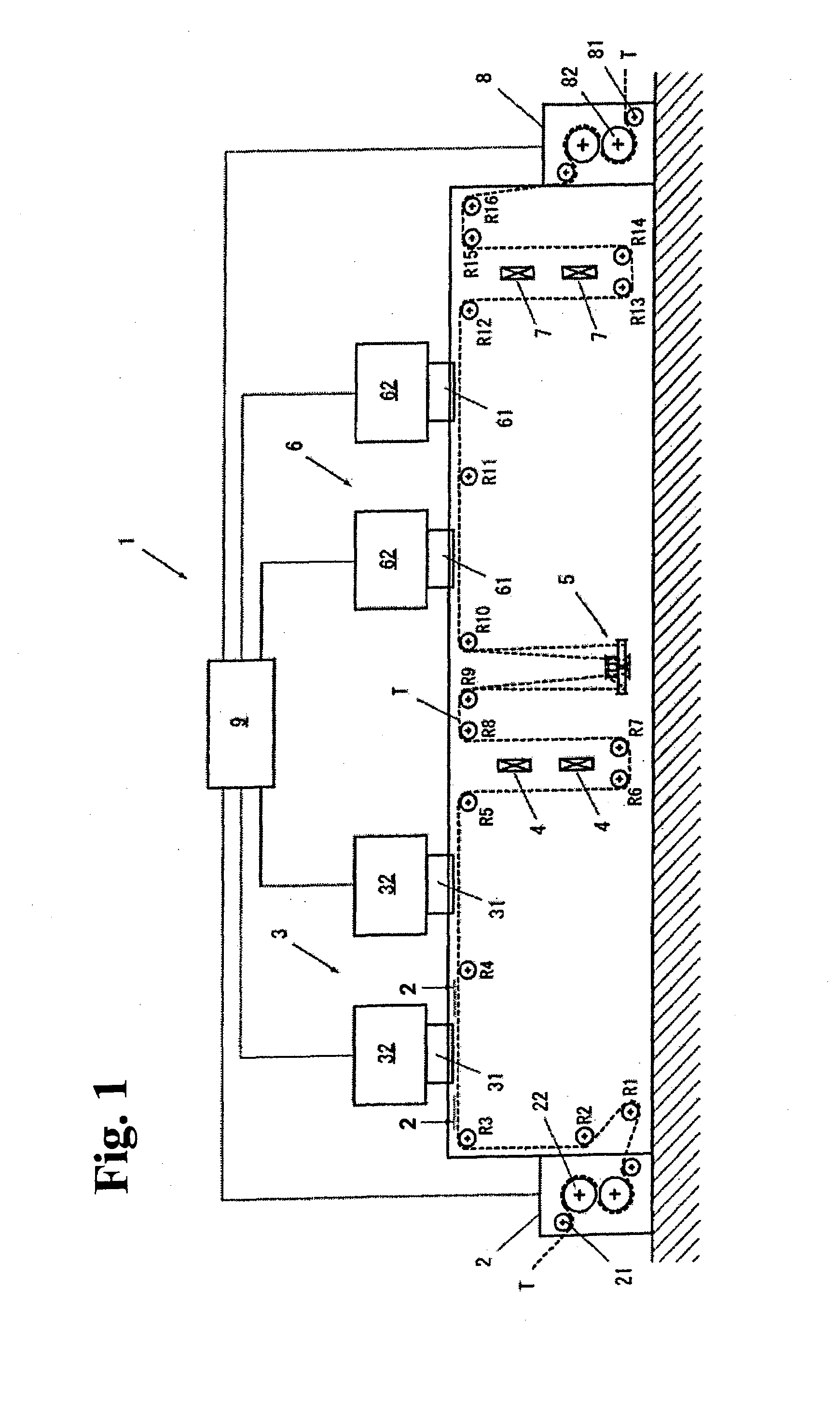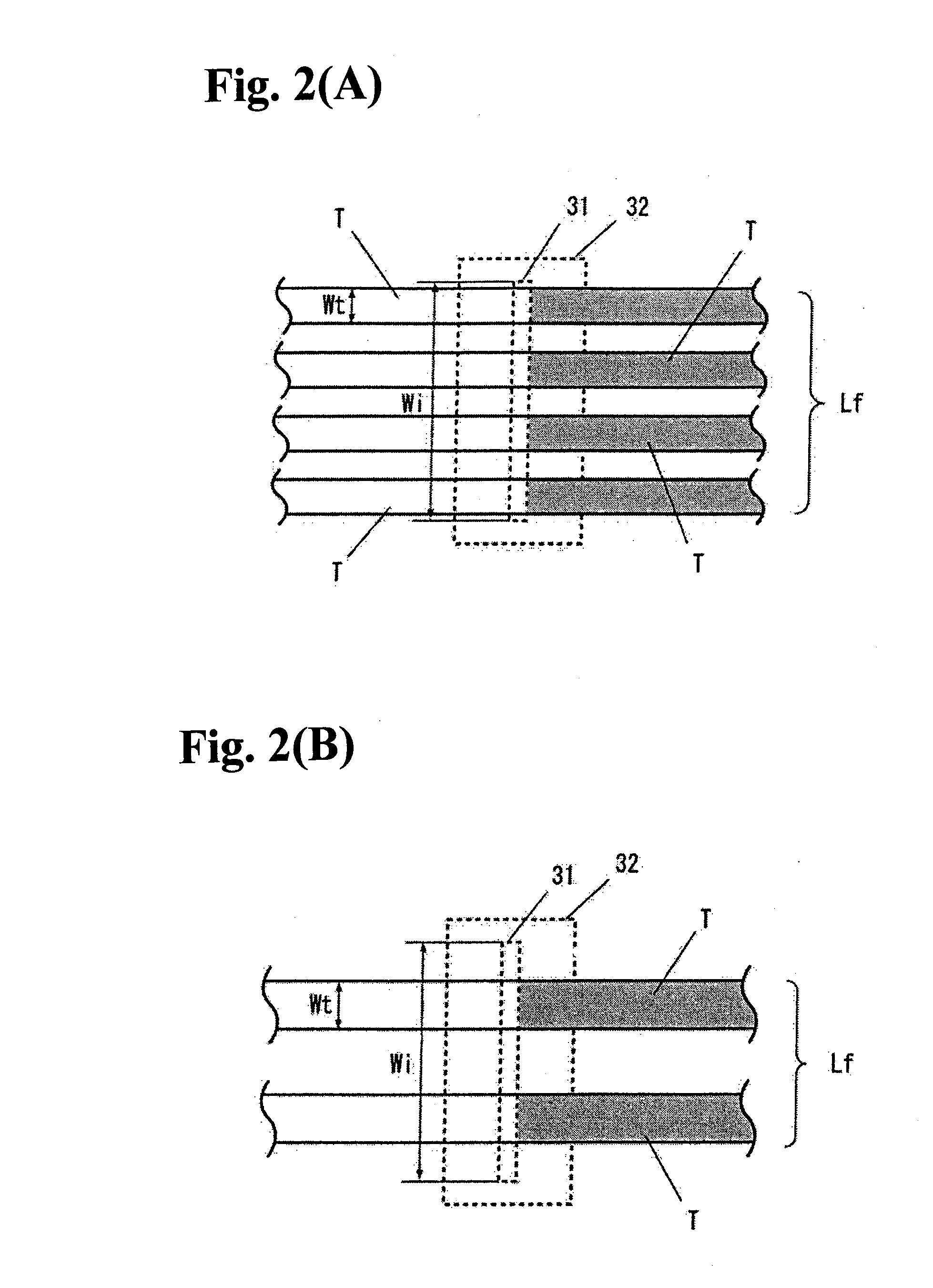Inkjet dyeing method and apparatus
a dyeing method and dyeing technology, applied in the field ofinkjet dyeing methods and apparatuses, can solve the problems of increasing environmental burden, inconvenient high-speed printing, and disadvantages of recording methods described in patent documents 2 and 2, so as to reduce environmental burden, reduce equipment costs, and easy subject to continuous printing
- Summary
- Abstract
- Description
- Claims
- Application Information
AI Technical Summary
Benefits of technology
Problems solved by technology
Method used
Image
Examples
first embodiment
[0027]Embodiments of the present invention will be described below with reference to FIGS. 1 to 8. FIG. 1 is a configuration diagram showing an inkjet dyeing apparatus according to the present invention. FIGS. 2(A), 2(B) are views taken along line 2-2 of FIG. 1, wherein FIG. 2(a) shows the case where four textiles are subjected to printing, while FIG. 2(B) shows the case where two textiles are subjected to printing. Shadow areas in FIGS. 2(A), 2(B) show the printed state of a textile.
[0028]An inkjet dyeing apparatus 1 as shown in FIG. 1 is an inkjet dyeing apparatus that dyes a belt-like textile T by ejecting ink, which includes a feeding section 2 for transporting the textile T to a front surface printing line Lf, a front surface printing section 3, disposed on the front surface printing line Lf, which dyes the front surface of the textile T by ejecting ink, a front surface drying section 4 for drying the front surface of the textile T, an inverting section 5 that inverts the texti...
second embodiment
[0043]The inkjet dyeing apparatus 1 has the front surface drying section 4 and the inverting section 5 disposed below the front surface printing section 3 and has the rear surface drying section 7 disposed below the rear surface printing section 6. As just described, disposing the drying sections 4, 7 and the inverting section 5 below the printing sections 3, 6 can reduce dead spaces inside the inkjet dyeing apparatus, thereby allowing downsizing of the apparatus. In particular, the overall length L of the inkjet dyeing apparatus 1 can be reduced.
[0044]According to the inkjet dyeing apparatus 1 as described above, the textile T can be transported to the inkjet dyeing apparatus 1 from the feeding section 2, transported to the front surface printing section 3 through the transporting rollers R1 to R4, transported back to below the upstream front surface printing section 3 through transporting rollers R5 to R7, transported to the front surface drying section 4 through the transporting...
third embodiment
[0045]The inkjet dyeing apparatus 1 as shown in FIG. 5, includes a feeding section 2 for feeding a textile T to a front surface printing line Lf, a printing section 10, disposed on the front surface printing line Lf, which dyes the textile by ejecting onto the front surface of the textile T, a front surface drying section 4 for drying the front surface of the textile T, an inverting section 5 that inverts and feeds the textile T to the rear surface printing line Lr, a printing section 10, disposed on the rear surface printing line Lr, which dyes the textile by ejecting ink onto the rear surface of the textile T, a rear surface drying section 7 for drying the rear surface of the textile T, a transporting section 8 for transporting out the textile T to the next step, and a control unit 9 for controlling the ejecting of the ink. The printing section 10 has a structure similar to that of the front surface printing section 3 or the rear surface printing section 6, including an inkjet he...
PUM
| Property | Measurement | Unit |
|---|---|---|
| width | aaaaa | aaaaa |
| width | aaaaa | aaaaa |
| width | aaaaa | aaaaa |
Abstract
Description
Claims
Application Information
 Login to View More
Login to View More - R&D
- Intellectual Property
- Life Sciences
- Materials
- Tech Scout
- Unparalleled Data Quality
- Higher Quality Content
- 60% Fewer Hallucinations
Browse by: Latest US Patents, China's latest patents, Technical Efficacy Thesaurus, Application Domain, Technology Topic, Popular Technical Reports.
© 2025 PatSnap. All rights reserved.Legal|Privacy policy|Modern Slavery Act Transparency Statement|Sitemap|About US| Contact US: help@patsnap.com



